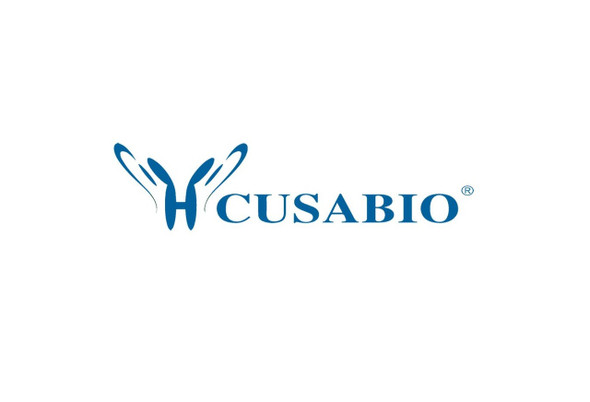Cusabio Human Recombinants
Recombinant Human TNF receptor-associated factor 3 (TRAF3) | CSB-EP024148HU
- SKU:
- CSB-EP024148HU
- Availability:
- 3 - 7 Working Days
Description
Recombinant Human TNF receptor-associated factor 3 (TRAF3) | CSB-EP024148HU | Cusabio
Alternative Name(s): CAP-1 (CD40 receptor-associated factor 1) (CRAF1) (CD40-binding protein) (CD40BP) (LMP1-associated protein 1) (LAP1) (CAP1) (CRAF1)
Gene Names: TRAF3
Research Areas: Immunology
Organism: Homo sapiens (Human)
AA Sequence: MESSKKMDSPGALQTNPPLKLHTDRSAGTPVFVPEQGGYKEKFVKTVEDKYKCEKCHLVLCSPKQTECGHRFCESCMAALLSSSSPKCTACQESIVKDKVFKDNCCKREILALQIYCRNESRGCAEQLMLGHLLVHLKNDCHFEELPCVRPDCKEKVLRKDLRDHVEKACKYREATCSHCKSQVPMIALQKHEDTDCPCVVVSCPHKCSVQTLLRSELSAHLSECVNAPSTCSFKRYGCVFQGTNQQIKAHEASSAVQHVNLLKEWSNSLEKKVSLLQNESVEKNKSIQSLHNQICSFEIEIERQKEMLRNNESKILHLQRVIDSQAEKLKELDKEIRPFRQNWEEADSMKSSVESLQNRVTELESVDKSAGQVARNTGLLESQLSRHDQMLSVHDIRLADMDLRFQVLETASYNGVLIWKIRDYKRRKQEAVMGKTLSLYSQPFYTGYFGYKMCARVYLNGDGMGKGTHLSLFFVIMRGEYDALLPWPFKQKVTLMLMDQGSSRRHLGDAFKPDPNSSSFKKPTGEMNIASGCPVFVAQTVLENGTYIKDDTIFIKVIVDTSDLPDP
Source: E.coli
Tag Info: N-terminal 6xHis-tagged
Expression Region: 1-568aa
Sequence Info: Full Length
MW: 68.6 kDa
Purity: Greater than 90% as determined by SDS-PAGE.
Relevance: Regulates pathways leading to the activation of NF-kappa-B and MAP kinases, and plays a central role in the regulation of B-cell survival. Part of signaling pathways leading to the production of cytokines and interferon. Required for normal antibody isotype switching from IgM to IgG. Plays a role T-cell dependent immune responses. Plays a role in the regulation of antiviral responses. Is an essential constituent of several E3 ubiquitin-protein ligase complexes. May have E3 ubiquitin-protein ligase activity and promote 'Lys-63'-linked ubiquitination of target proteins. Inhibits activation of NF-kappa-B in response to LTBR stimulation. Inhibits TRAF2-mediated activation of NF-kappa-B. Down-regulates proteolytic processing of NFKB2, and thereby inhibits non-canonical activation of NF-kappa-B. Promotes ubiquitination and proteasomal degradation of MAP3K14.
Reference: "Identification of a novel activation-inducible protein of the tumor necrosis factor receptor superfamily and its ligand." Kwon B., Yu K.-Y., Ni J., Yu G.-L., Jang I.-K., Kim Y.-J., Xing L., Liu D., Wang S.-X., Kwon B.S. J. Biol. Chem. 274:6056-6061(1999)
Storage: The shelf life is related to many factors, storage state, buffer ingredients, storage temperature and the stability of the protein itself. Generally, the shelf life of liquid form is 6 months at -20?/-80?. The shelf life of lyophilized form is 12 months at -20?/-80?.
Notes: Repeated freezing and thawing is not recommended. Store working aliquots at 4? for up to one week.
Function:
Involvement in disease:
Subcellular Location:
Protein Families:
Tissue Specificity:
Paythway:
Form: Liquid or Lyophilized powder
Buffer: If the delivery form is liquid, the default storage buffer is Tris/PBS-based buffer, 5%-50% glycerol. If the delivery form is lyophilized powder, the buffer before lyophilization is Tris/PBS-based buffer, 6% Trehalose, pH 8.0.
Reconstitution: We recommend that this vial be briefly centrifuged prior to opening to bring the contents to the bottom. Please reconstitute protein in deionized sterile water to a concentration of 0.1-1.0 mg/mL.We recommend to add 5-50% of glycerol (final concentration) and aliquot for long-term storage at -20?/-80?. Our default final concentration of glycerol is 50%. Customers could use it as reference.
Uniprot ID: Q13114
HGNC Database Link: N/A
UniGene Database Link: N/A
KEGG Database Link: N/A
STRING Database Link: N/A
OMIM Database Link: N/A






